Modern society is becoming increasingly dependent on social media for communication and information access and its role in disaster management cannot be overlooked. #RecoverSouthCoast is a research project that analysed data from Twitter and conducted interviews to understand the ways in which social media supported (or hindered) recovery following the summer bushfires on the south coast of New South Wales in 2019–20. This paper examines #RecoverSouthCoast findings from a Twitter content analysis. The results revealed that Twitter use can support bushfire recovery in diverse ways, including post-disaster reconstruction and infrastructure services, donations and financial support, mental health and emotional support, environmental health, business and economic activities, animal welfare, information support, solidarity and social cohesion and insurance claims. These findings are important because they strengthen evidence to support policy and investment in tools and social media capabilities within organisations involved in disaster response and recovery. Interestingly, some challenges to the effective use of Twitter during the recovery process were also identified. The paper provides recommendations for emergency management practice in Australia.
Introduction
Social media platforms such as Twitter and Facebook have long shown potential for supporting emergency management activities in Australia (Dufty 2012). However, as Anikeeva, Steenkamp and Arbon (2015) note, there remains significant levels of reluctance or scepticism around social media which research can help to shift. There has been some progress in documenting the role of social media in supporting emergency management in Australia, including in relation to the 2009 Gippsland bushfires (Willems, Forbes & Simmons 2021) the 2010–11 floods in Queensland and Victoria (Bird, Ling & Haynes 2012) and the summer bushfires in NSW in 2019–20 (Atkinson et al. 2021). The general consensus is that social media is not a replacement for other formal sources of emergency information, but rather it complements them by extending and amplifying the reach of official messages (Bird, Ling & Haynes 2012; Taylor et al. 2012).
Social media plays a role in facilitating the dissemination of emergency information relating to evacuation centres, road closures, warnings, monitoring of people’s safety, identifying hazard risk, situational awareness, coordinating community response, fundraising, volunteering, allocating resources during recovery and providing support to people during and after a disaster (Bird, Ling & Haynes 2012; Dufty 2012). For an in-depth appreciation of work in this field, see Wiegmann et al. (2021), Reuter & Kaufhold (2018) and Simon, Goldberg and Adini (2015) who provide a thorough review of research relating to the use of social media during emergencies. Despite the burgeoning body of research, a comprehensive review of the literature found that research has so far focused on social media use in disaster response while recovery remains relatively under-explored (Ogie et al. 2022).
The aim of this study was to use data from publicly available Twitter messaging during and after the NSW bushfires to investigate the diverse ways in which Twitter supported (or hindered) recovery. In Australia, Facebook is used extensively in disasters Dufty (2016), however, this study focused on Twitter because Twitter has some features that make it practical for use in disaster management and research. As summarised by (Dufty 2016), these features include:
- a less restrictive third-party API (Application Programming Interface) for ease of data access
- non-reciprocal instant connection to users and their postings through ‘following’
- real-time monitoring of topics by using hashtag ‘#’
- speed of disseminating information
- content is publicly available.
Method
This study used 12,230 publicly accessible unique tweets about the 2019–20 bushfires on the south coast of NSW. The study area (Figure 1) included 3 local government areas of Shoalhaven, Bega Valley and Eurobodalla on the south coast of NSW. The tweets collected for the research included recovery-related content posted between 1 October 2019 and 31 August 2020.
A total of 200,017 tweets was initially retrieved that used the words ‘fire’ in combination with one or more bushfire-affected NSW south coast locations such as #Cobargo, #Shoalhaven, #Bega, #Eurobodalla, #Eden or #Southcoast. Tweets that the public did not adequately engage with or contain trivial and/or irrelevant content were eliminated resulting in a net total of 12,230 tweets. This total also included tweets containing the word ‘fire’ in combination with NSW (e.g. #NSWfires) if they generally conveyed useful information about the NSW bushfires and were not related to locations outside the study area. Tweets were considered relevant if they related to one or more aspects of disaster recovery, as identified by Ogie et al. (2022).
The content analysis involved a coding process in which tweets were assigned to one specific category of disaster recovery, based on the core focus or relevance of the message (Kim et al. 2018). Based on the description associated with the user account of the sender, each tweet was also assigned to one of several user categories, namely: ‘citizen’, ‘scientist & expert’, ‘business’, ‘celebrity’, ‘community organisation’, ‘emergency agency’, ‘news media’, ‘politician & political organisation’, ‘NGO/humanitarian’ and ‘other government agency’. These categories are mostly self-explanatory, however, some require defining:
- ‘NGO/humanitarian’ includes non-profit organisations that aid vulnerable people and provide humanitarian assistance in times of crises.
- ‘Community organisation’ includes community-based organisations established to provide services that build capacity, strengthen social connections and improve the overall functioning of communities.
- ‘Business’ relates to entities involved in trading or other commercial activities, including small private businesses and large corporations.
- ‘Other government agency’ is government-owned organisations that provide public services that are not related to emergency management.
- ‘Scientist & expert’ encompasses individuals with extensive training, expert knowledge, and insights to support decision-making relating to the bushfires (examples include professors and distinguished academics, economists, medical experts, clinical psychologists, agricultural scientists, environmental consultants, structural engineers, meteorologists).
Each stage of the categorisation process was scrutinised by 2 or more researchers so that discrepancies could be highlighted, discussed and a consensus reached on the appropriate categorisation for each tweet. Content analysis was performed on tweets to understand the diverse ways in which Twitter was used for bushfire recovery.
This research received ethics approval from the University of Wollongong Human Research Ethics Committee id: 2021/226.
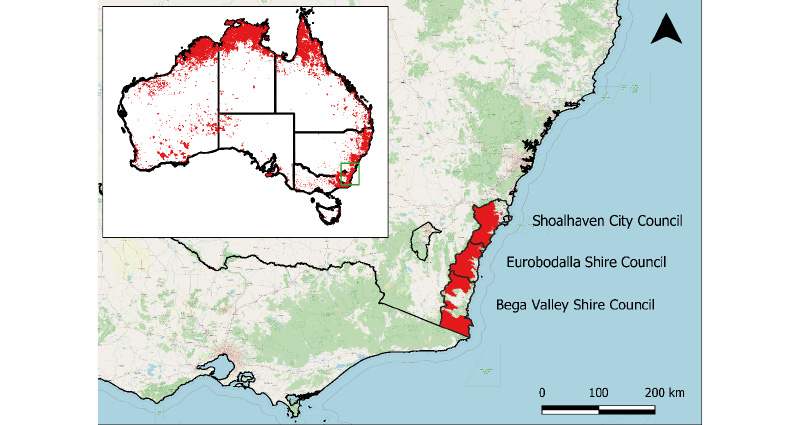
Figure 1: The study area was the south coast region from Shoalhaven to the Victorian border in NSW.
Data source: National Indicative Aggregated Fire Extent Datasets from te Department of Agriculture, Water and the Environment.
Results and discussion
Results are presented in relation to various aspects of recovery (shown in Figure 2). In absolute numbers, the recovery type category of ‘Information support’ was the most popular aspect of bushfire recovery discussed on Twitter and the tweets mainly originated from news media, citizens, and emergency agencies. The next most popular recovery type category was ‘Solidarity and social cohesion’. The recovery type category of ‘Insurance claims’ was the least represented aspect of the tweets collected. Figure 2 shows the recovery type topics cross-matched with the user groups (in no particular order). The figure indicates the ranging areas and levels of interest (recovery type category) of the user groups. This information can assist in the management of recovery activities.
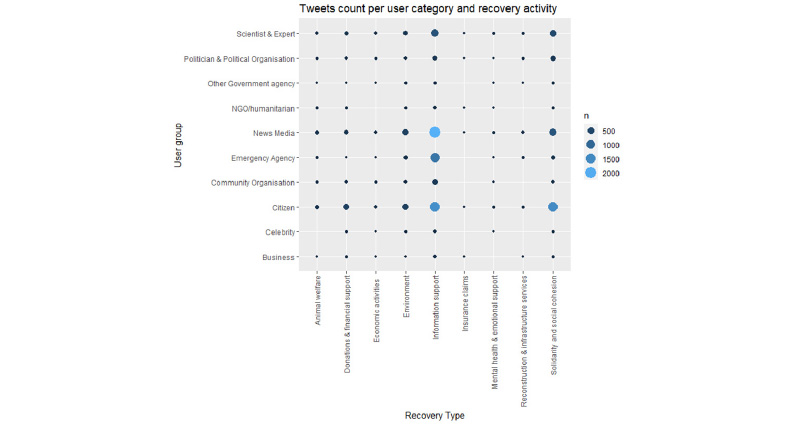
Figure 2: Contributions of user groups to the recovery type categories.
Reconstruction and infrastructure services
The tweets used in this study showed that the use of Twitter played a role in the reconstruction of buildings and the restoration of infrastructure services in bushfire-affected communities. People used Twitter to publish updates about bushfire damage to roads, powerlines, water supplies, rail networks, telecommunications infrastructure, homes and community assets. Additionally, Twitter was used to provide the updates of subsequent restoration of infrastructure services, including information about the clearing of fallen trees and powerlines to allow road access.
Twitter was also used to coordinate logistics required to access infrastructure services, for example, drawing attention to neighbouring towns where people could get batteries recharged, fuel tanks refilled and connect to telecommunications. Individuals such as engineers and IT business owners used Twitter to offer support to restore infrastructure services. A review of the Twitter engagement (replies) associated with the tweets suggests that bushfire-affected communities in the south coast of NSW found the messages helpful during their recovery with information about boiling drinking water and disconnecting water tanks in case of contamination from ash and particulate matter.
Donations and financial support
Use of Twitter was beneficial in garnering donations and financial support for bushfire-affected communities. Tweets featured information about fundraising events, including sports events, art sales and concerts to raise funds for those affected by the bushfires (Figure 3). Consequently, donations poured in from sport clubs, large corporations, private individuals, celebrities, small businesses and community groups as Twitter was used to mobilise donors. For example, an Australian performer used social media platforms to raise over $50 million through an international fundraiser established for the NSW Rural Fire Service. Many donations for bushfire relief efforts were directed to organisations such as the NSW Rural Fire Service, Red Cross Australia, Wildlife Rescue (WIRES) and the Port Macquarie Koala Hospital, as well as other fundraising campaigns soliciting direct donations to local communities. Several users replied to bushfire donation appeals on Twitter with positive sentiments, commenting that they had donated and encouraging others to do the same. This is a demonstration of ease of use of Twitter to influence behaviours and mobilise donations.

Figure 3: Example tweets promoting fund-raisers for bushfire services or affected communities.
The content analysis for this study showed that Twitter was useful to manage donations. It was used to call for volunteers to help sort donated goods and link people who needed donated items to people willing to donate those items. Some messages provided directions to where people could find financial help, including how to apply for bushfire grants. Twitter was used to send updates on recovery money raised, how donated goods had been distributed and to thank people for donations. In addition, there were tweets about scammers who had tried to financially exploit donors.
Mental wellbeing and emotional support
The research revealed that mental health was an issue for some people and one that is likely to linger for years. Terms such as ‘stress’,’ trauma’, ‘anxiety’, ‘depression’ and ‘grief’ were used to describe
how people were feeling. Some messages linked high levels of mental distress and psychiatric admissions to bushfire-induced poverty and homelessness. Trauma and anger were evident in messages from people in small communities where lives had been lost. One user used ‘climate anxiety’ as a general way to describe a normal part of daily life. Other people used Twitter for their emotional support and counselling because they were experiencing fear and anxiety over returning home after the bushfires. Some people used Twitter to express concerns over post-traumatic stress disorder and the potential for a mental health epidemic, including concerns about the wellbeing of first responders, firefighters and farmers. Twitter was used to encourage mental health support-seeking and to circulate free evidence-informed mental health support resources, including links to service providers such as Primary Health Networks, Beyond Blue, Red Cross Australia, Phoenix Australia, Lifeline and other support groups.
Environmental health
Messages contained information about the condition of the environment such as damage to bushland and air quality. The bulk of the messages focused on hazardous air quality, haze blanketing cities and towns, visibility problems and fire alarms going off due to smoke. Some Twitter users expressed concerns related to breathing and chest pain. People with respiratory issues and other conditions were advised to take extra care and to shelter indoors, use face masks, keep medications close by and seek medical attention if needed. There were tweets from some users and news media about people having fatal asthma attacks. Twitter was also used, mainly by individuals, to mobilise support for clean-ups of the environment. Tree planting was a common aspect of environmental recovery that was discussed and coordinated using Twitter.
Business and economic activities
Twitter allowed people to share information and influence positive behaviours relating to tourism, farming and business activities that supported the local economy. Twitter was initially used to advise potential tourists against visiting the south coast of NSW due to the heightened bushfire risk. Later, the platform was used to encourage tourists back to the south coast after the fires. There were several tweets advising that large parts of the NSW south coast were reopened for business. Agencies such as NSW Rural Fire Service posted messages encouraging tourists to visit Bega and Eurobodalla to support regional businesses recovery from the bushfires. These messages received positive replies from holiday-makers and bushfire-affected communities. After the fires, #buyfromthebush trended on Twitter with the hashtag used to showcase products from local businesses to encourage support for communities.
Information sharing
Information sharing is a crucial part to disaster recovery. This research showed that Twitter played a role in helping people (users of Twitter) to understand the bushfire situation and to make decisions about their safety and wellbeing, particularly if the originating tweet was from a credible source like an emergency services organisation. Place-specific information was available on Twitter letting people know when it was safe to return. Twitter was also used to share information about access to recovery support, including help with legal problems associated with the bushfire, insurance claims and tenancy problems. Other topics related to the cause of the fires and evidence from the Bushfire Royal Commission.
Animal welfare
Content analysis revealed that Twitter was used by the NSW Department of Primary Industries, NSW Local Land Services and the Royal Society for the Prevention of Cruelty to Animals to share information to help people manage their pets and domestic animals. This included available accommodation for pets, correctly tagging animals for ease of reuniting with owners and information to get animals to safety. WIRES used Twitter to provide information about helping bushfire-affected wildlife including contacting local wildlife rescue groups or vets when injured animals are found, leaving bowls of water outside, providing shaded areas for animals to cool off, driving cautiously to avoid animals on the road and not to pour water directly into animals’ mouths or give wildlife inappropriate food.
Twitter was used to convey information about where help was needed related to animal care, constructing cattle yards, providing supplies for livestock and wildlife, sewing animal pouches and bat wraps, making nesting boxes and crocheting bird nests. Tips from ecologists were also shared on Twitter to help rural property owners manage their land in ways that assists wildlife to recover. Tweets exposed a despair and sadness over the consequences of the bushfires on wildlife. A notable contrast, observed from the tweets, was the focus on wildlife as creatures experiencing the fires or as members of species ‘threatened’ by the fires, whereas the death of farm animals was mostly, though not always, treated as loss of stock and livelihoods for farmers. The tweets included messages of hope and healing (e.g. Figure 4) when burnt bushland started regreening and healthy wildlife were sighted again.
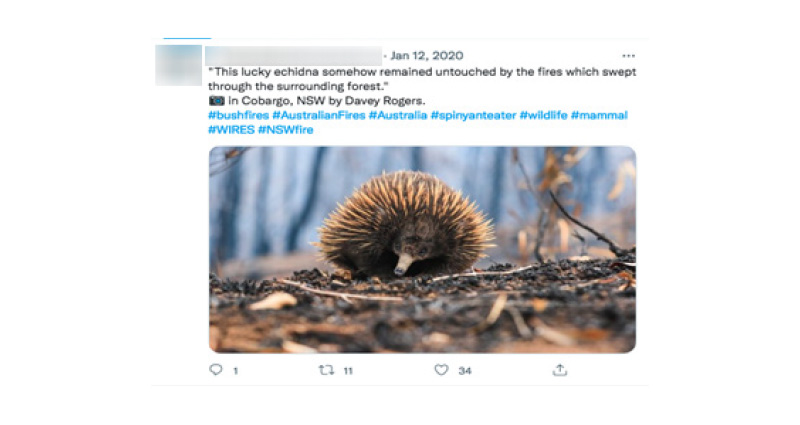
Figure 4: A tweeted message of hope for animal welfare.
Solidarity and social cohesion
In times of crisis, people can feel a sense of belonging in a socially cohesive and resilient community where there is unity, mutual support and a strong resolve to build back stronger and better. The results of the content analysis in this study revealed that Twitter could connect people needing support and people who provided support. There was a proportion of tweets expressing support and gratitude to firefighters and volunteers, including the volunteer firefighters killed during the bushfires and the 3 American air crew killed in an air tanker crash. There were messages thanking people for working tirelessly to help, including those who donated money and resources or offered their homes to bushfire evacuees. Some users published video links on Twitter to share their personal journeys with recovery, rebuilding and healing processes.
Social cohesion appeared undermined by contentious and socially divisive topics, particularly the politicisation of climate change and its link to the bushfires. Twitter posts were used, in overt and implicit ways, to hold governments accountable for perceived failures to act in relation to climate change and to show leadership (see Bednarek et al. (2022)). Other Twitter users (a minority) rejected the link between the fires and climate change and both perspectives of this political argument often used humour and satire (Figure 5). The timing of financial support for recovery was a source of worry expressed in the tweets as some users expressed concerns that the ‘notional’ $2 billion bushfire recovery fund announced at the time by the Australian Government was not spent and payments were delayed.

Figure 5: Examples of tweets that link bushfires with other political concerns.
Insurance claims
There were some tweets that did not quite fit into the identified recovery type categories but could be categorised into the ‘Insurance claims’ category. Although, some of these tweets originated from insurance companies offering to support clients who were affected by the bushfires, there were tweets expressing concerns about other insurance matters, including the lack of compensation or insurance cover for volunteer firefighters, frustration over the slow pace of processing insurance claims, concerns about the high number of uninsured property owners in regional communities and worry that insurance premiums might rise after the fires. An interesting finding was that while insurance was a not a prominent topic in the Twitter sample, sentiment analysis revealed that tweets around insurance and insurance claims were largely negative. This suggests that insurance issues are a problematic aspect of recovery.
Issues related to the use of Twitter
Veracity of information
While Twitter can be a valuable source of information, all social media platforms suffer from the confidence people have in the reliability of information shared. Misinformation, conflicting information and the trustworthiness of sources was identified and questioned in several tweets (e.g. Figure 6). This lack of confidence in the credibility of the information on Twitter can have detrimental implications as misinformation or lack of trust can undermine the decisions made by individuals during the recovery process (Anikeeva et al. 2015).
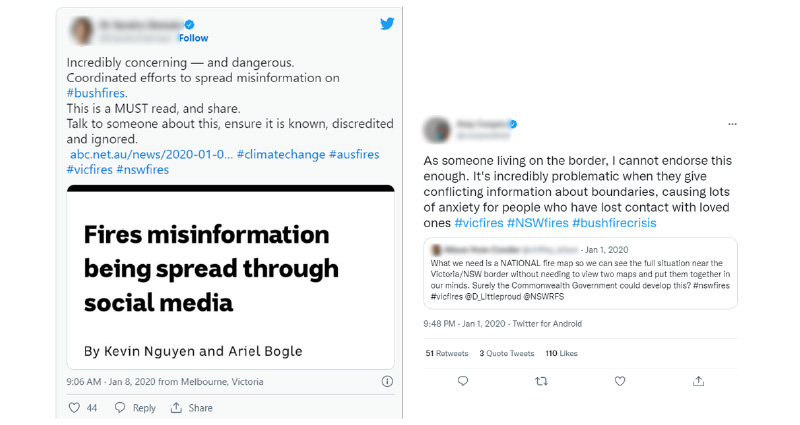
Figure 6: Misinformation on social media was a concern expressed on Twitter.
Access to Twitter and information
Content analysis of the tweets revealed that bushfire-affected communities had the greatest need for bushfire recovery messages yet could not gain access due to disruptions to communications and access to the Internet. It is important to recognise that the use of social media to disseminate recovery information does not equally serve everyone’s needs when those needing the information do not have access. This also applied to people who do not use Twitter or other online platforms. The use of other, more traditional, methods of emergency communication remain important in the information-sharing mix.
Problematic or disturbing messages
Another issue observed from analysing the Twitter content was that users found some tweets to be distressing, anxiety-inducing, controversial and socially divisive. Twitter users expressed concerns over the antagonistic use of Twitter, particularly for political point-scoring. The ‘unvetted’ nature of messages can be detrimental to recovery as users in this study expressed a desire for more positive and uplifting content to support recovery.
Social media capability gaps
This research revealed that the readiness of the authorities who took responsibility for producing a lot of social media messaging during and after the fires varied considerably in relation to resourcing and strategy. Most authorities (e.g. Bega Valley Shire and Shoalhaven City Council) disseminated information about the bushfires through multiple social media platforms such as Facebook and Twitter. However, Eurobodalla Shire Council showed less evidence of use of Twitter (Figure 9).
Timing issues
Analysis revealed that issues related to timing can complicate on-the-ground logistics associated with managing and coordinating material donations and relief efforts. When an event changes on the ground, it can be difficult to update or stop the spread of a previous contradictory message once it has been shared/retweeted by users (e.g. Figure 7). This research showed that responding authorities faced logistics challenges in managing excess donated goods following posts on Twitter about the need for support (e.g. Figure 10). There were tweets saying that material donations were no longer needed and that money was preferred. However, a previous post continued to circulate on Twitter related to the need for donations and the donation of goods continued resulting in a logistics challenge.

Figure 7: Internet disruption affected the access to information on Twitter.
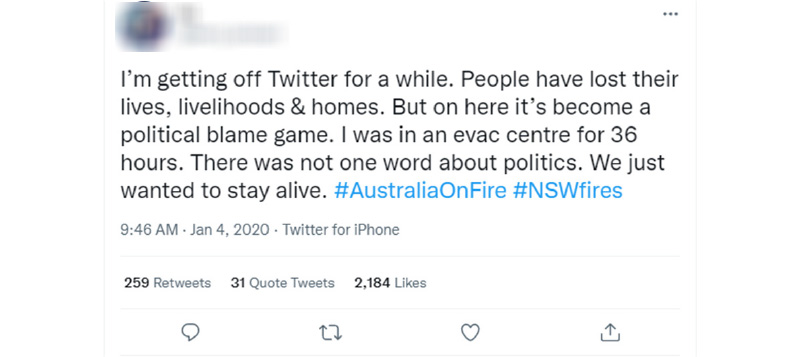
Figure 8: There was content on Twitter that was problematic for other users.
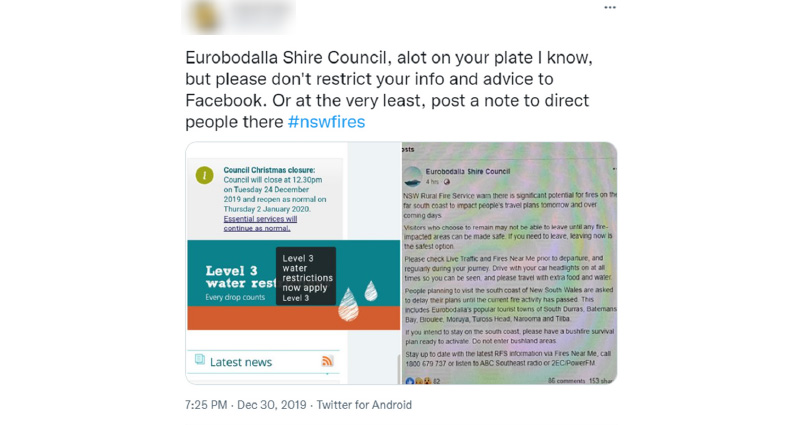
Figure 9: Eurobodalla Shire Council used Facebook rather than Twitter during the bushfires.
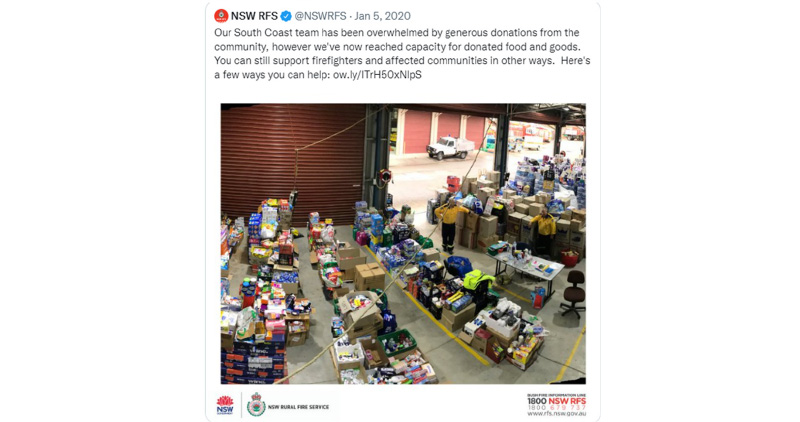
Figure 10: Organisations became overwhelmed by donated goods after an initial appeal on social media continued to circulate.
Recommendations and conclusions
he #RecoverSouthCoast project analysed Twitter data from the summer bushfires in 2019–20 to consider ways to extend knowledge about the role of Twitter during recovery. This may be the first empirical research that provides an account of the diverse ways in which Twitter was used to support different aspects of recovery within communities in Australia, including in relation to post-bushfire reconstruction, donations and financial support, mental health, environmental health, business activities, information sharing, animal welfare, social cohesion and insurance. Recovery activities mostly posted to Twitter related to categories of ‘Information support’ followed by ‘Solidarity and social cohesion’ and the content was mostly generated by ‘news media’, ‘citizens’ and ‘emergency agencies’.
This research suggests that use of Twitter can support recovery in a number of ways and has the potential to be leveraged during future events. Organisations and policy makers involved in disaster response and recovery should maintain and could extend their investment in tools to harness real-time Twitter data to gain situational awareness about the different aspects of recovery, including monitoring topics of interest or concerns, community sentiment towards support or perceived failings and to develop strategies to use Twitter for influencing behaviours of people. Staff training and increased resourcing are always recommended to improve social media capability within organisations and agencies as well as within local governments. Future research could consider issues around Twitter use, as identified in this study, that hinders recovery.


